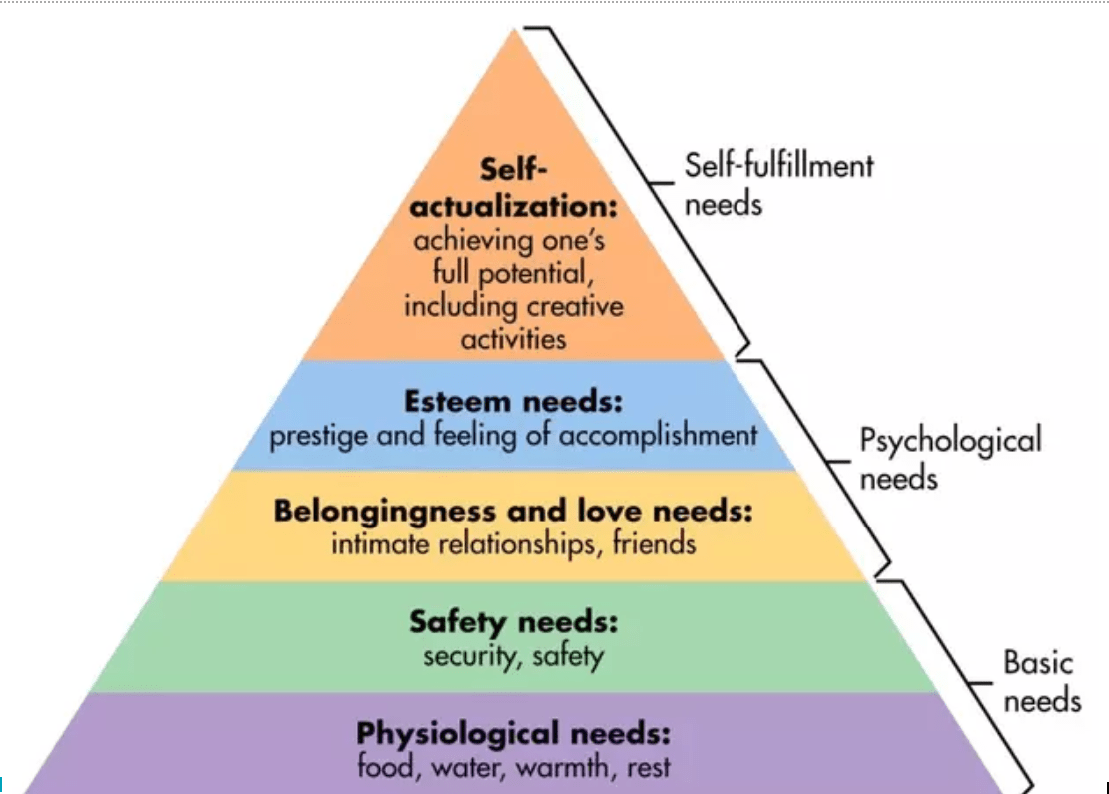| Summary |
Unable to have fulfilling communications with your remote employees? Streamline and centralize all your conversations with ProofHub’s async and real-time communication features. Try Now.
2020 transformed remote work, from a millennial thing to do, into the world’s new professional status quo. While many were quick to adapt, we are still learning the emotional and social aspects of a remote team connection.
Chances are that your team also consists of remote employees (my team does!) or will have them at a certain point in the future.
It’s not only the homegrown startups or mid-sized companies hiring remote workers. A recent Upwork survey shows that 73% of all departments will have remote workers by 2028.
But, (and it’s a big but) how well do you know your remote workers? Do you know if they like Tartar sauce or Picante? Do they know your favorite hangout places? How many of them lose temper easily?
These questions may sound rudimentary because these things usually don’t make it to Skype calls or daily debriefs but they hold all the more importance in virtual environments. In absence of an apparent emotional connection, an unsaid emotional veil starts creeping up in remote environments which could hurt your remote employees, beyond ways you can imagine.
Research at Harvard depicts how emotionally disconnected managers risk putting their (remote) employees into a state of fear, anxiety, and a lasting sense of disengagement. All of which lead to poor productivity.
As a team leader, you will be dealing with more remote workers than ever with changing company and team structures. It’s important to learn how to communicate with remote teams on emotional levels, and what measures to take to keep virtual teams connected.
So, how to build social connections in a remote team, and how exactly do you practice emotional intelligence in a healthy way? Let’s explore.
How to establish an emotionally sound remote team connection?

Balancing asynchronous and real-time communication
Asynchronous communication entails emails, file annotations, and task comments, etc, all of which are not urgent.
Real-time communication is everything that involves immediate attention such as chat, phone calls, and video meetings.
Problem
When the members are geographically dispersed, relying solely on asynchronous communication can cause conflicts. This is especially true for teams in different time zones. The remote team connection gets besieged and members can start to feel left out or worse alienated.
While emails are great for passively sharing information, the managers need to have an active emotional connection with the remote team. If the avenues of real-time and asynchronous communication are laggy, the team may not be able to address the concerns timely and feel “unvalued”.
The absence of consistent effective communication can also result in workers feeling socially isolated. The inaudible crunch of “teeth-biting” moments, the bursts of laughter, and awkward silences can hardly be experienced in an email thread.
Solution
Create channels of real-time communication. A great starting point is setting up channels for real-time communication using SaaS applications. You can do this by;
- Sharing your work phone number with remote employees.
- Creating shared spaces for team discussions so that all the team members can freely share their ideas.
- Reducing or limiting any hierarchies that the employee must go through to reach out to you.
- Integrating real-time communication channels for intra-group conversations and to reach out to upper management.
- Using a Team Management Software for streamlining project communication that doesn’t make the remote team left-out.
A meeting should be a click away. In a physical office, you can casually stroll up to someone’s seat for a quick question or book the conference room for a formal meet-up.
In remote teams, you’ll have to ask for availability, bake in the non-productive time, get on the meeting call, and test if the mic is working,
The additional friction can make employees reluctant, and dismissive of their need to communicate. Therefore, it’s advisable to invest in tools that let you schedule and hold meetings in a matter of clicks.
Also, the protocols surrounding real-time meetings should encourage conversations rather than inhibiting them.
Bring communication to one place. If you have too many apps for managing the remote team connection, you may end up disrupting the flow of conversations, and make it hard to keep a track of discussions.
Hence, it’s a good remote work practice to centralize all your communication to one platform. Something that lets you mark @mentions and send out a real-time chat notification at the same time.
Centralize all your remote team communication in a user-friendly interface, with async and live chat features, using ProofHub. Test for Free.
Cultivate psychological safety for a better remote team connection
Psychological Safety is a term given by Harvard professor, Amy Edmondson, which is defined as,
A belief that one will not be punished or humiliated for speaking up with ideas, questions, concerns, or mistakes.
We can also look at it as the “team’s comfort zone” and you might have noticed that the team members who are more vocal about their ideas basically feel psychologically safe.
Problem
Remote teams usually have members from diverse geographical locations and ethnicities. If they are too distant from the company’s physical office, they might never meet their in-house counterparts.
No matter how regularly the team may hold video meetings, it’s hard to replicate the kind of human interaction that is possible in the physical office.
The remote team behaves like a detached subset of the team with its own group dynamics.
All of these factors ultimately lead to social isolation and the manager’s inability to fully comprehend the remote team’s mental state. Thus leading to low levels of psychological safety and a loose remote team connection.
The absence of psychological safety negatively affects work motivation, the team’s inner drive to take risks and deliver their best work in pressure situations.
Solution
It’s important to understand that low levels of psychological safety are bound to exist in remote environments unless carefully dealt with.
Make yourself available. Harvard’s article on Primal Leadership points out how the manager’s attitudes, behavior, and even mood deeply affect the team.
The team is quick to develop perceptions and alter their work habits according to how the manager treats them. This is equally true when it comes to example-setting.
By being vulnerable yourself, you can enable the team members to be vulnerable without feeling scared or inappropriate. The same applies to providing feedback to your remote team – try to avoid statements that demotivate their morale or restrict individual freedom.
Promote voluntary efforts. The inner sparks of creativity and the zeal to try something different can easily be suppressed in virtual work environments. Therefore, whenever you find a team member putting in voluntary efforts to approach a problem, it is recommended to promote the same.
This would also work in alignment with our efforts to reduce the feeling of social discomfort and low levels of psychological safety. Moreover, it’s great for establishing an emotional connection with the remote team.
Be very mindful of ethnic differences. The real impact of that little smirk made to the overseas employee or the over-the-seam cultural joke only shows when something drastic happens.
Not showing enough respect for ethnic differences can become a breeding ground for toxicity, which leads to lower team morale. This calls for going the extra mile to ensure that each individual employee is catered to with respect and belongingness.
Be empathetic in your management style

Empathy in workplaces has been an ever-evolving subject, and now with growing remote teams, the need for empathy-driven management is deeply felt.
The State of Workplace Empathy Study shows that 76% of employees feel empathy is a productivity driver. At the same time, about 93% of CEOs also reflected that more efforts can be put in to improve workplace empathy.
Problem
We have already gone over the fact that remote teams generally face communication challenges leading to lower levels of psychological safety. Well, it works the same way with empathy.
The flow of communication in remote environments isn’t as rich as office-based teams, which makes it hard for managers to understand the challenges that the team may be facing. It is further heightened with the sense of emotional detachment that brews up due to a lack of active human interaction.
This results in team members feeling that their basic human needs are not being fulfilled. We can refer to Maslow’s Pyramid of needs, which when not met, can decrease work satisfaction and the innate ability to stay productive.

Solution
Workplace empathy is a skill that can be developed over time, and included in the ways you provide solutions to the team’s problems. A few ways by which you can build a stronger remote team connection via empathy are;
Active listening. Empathy is easier to exhibit when you clearly know the problem at hand. In virtual environments, the team members may shirk from directly addressing their problems. But if you employ active listening skills, you can tell them apart out in their conversations.
For instance, one of your remote team members may have hinted about recurring health issues that are being magnified due to their peculiar shift timings. This is unavoidably resulting in incessant requests for leaves that are difficult for you to approve.
In such a case, rather than referring the employee to HR, you can figure out alternate shift timings that are more comfortable for the employee to work in, and lets them avoid taking too many leaves.
Hear the full story. In order to practice empathy, it’s always better to understand the full story when a workplace challenge comes up. It’s very hard for any manager to offer an empathetic solution if they know the story in bits and pieces.
Empathy involves action. It’s important to remember that empathy is best portrayed when there is some helpful action involved. If the manager simply sympathizes with the employee’s problems and mostly provides verbal support, the efforts only go in vain.
A striking example of action and empathy has been set by Buffer’s team management. The team was facing challenges with being comfortably aligned with their work. They often found it difficult to put aside time for personal activities.
Buffer changed their schedule to a 4-day work-week to promote a healthier work-life balance, which critically helped the team members meet their challenges. While it’s not a permanent move, it sets a wonderful precedent for how empathy can be practiced for workplace problems.
Celebrate your team!
Moments of celebration bring moments of joy and motivation. Whilst in the office, it’s easier to celebrate a milestone with a Pizza treat or a coffee get-together, such a culture isn’t the default thing in remote teams.
Problem
There’s no debate on the fact that when efforts are recognized and achievements are wholeheartedly acknowledged, there are several positive impacts on the individual, as well as the team.
In remote teams, if there’s a scarcity of consistent effort acknowledgment, it can quickly turn into demotivation for employees. It adds to the overall social detachment and somewhere employees may end-up feeling undervalued. In comparison, the in-house employees are less vulnerable to such situations. Ultimately, it weakens the remote team connection on emotional grounds.
Solution
Virtual Celebrations. Celebrating virtually is a great alternative to in-person celebrations and there are several innovative ways to do so. Here’s a quick list of things you can do to celebrate your remote team;
- Featuring employee achievements on the company’s social media pages.
- Video meetings with dress codes and online party activities for festivals/holidays. (Here are a few Halloween Ideas)
- Monthly virtual celebrations for celebrating the milestones achieved during the month.
- Virtual award ceremonies for top-performing employees.
- Creating an internal team hall-of-fame page for highlighting achievements.
Group Praises. Praises, when handed out in groups, become even more pronounced. Celebrating employee achievements in virtual groups is one great idea to make sure that each individual feels motivated.
Here at work, we use the Announcements (one of the many features of ProofHub) to share something worth celebrating with the entire team. It sends out a notification to everyone no matter where they are. It also lets the team explore their creativity with emoji and GIF comments!


Tagging the whole team in the same email is a pain. Send out announcements in one click with ProofHub. Try for Free.
How about some cool gifts? Whenever an achievement is rewarded with a cool gift, such as a shopping voucher or a fancy laptop sleeve, it just makes the celebration a lot more tangible.
We have been doing this for a long time. In our monthly sports events, the winning team is always rewarded with funky little gifts. Many organizations have full-blown Rewards and Recognition programs that work equally well for remote employees, to propagate the fact that their work is valued.
Final thoughts on remote team connection
The future of work uncompromisingly entails remote work. We already have teams like Buffer and Trello that have 100% remote teams, and many are trying their luck with distributed teams.
This shifting workplace landscape calls for new perspectives on managing emotional health for remote workers. New ways of overcoming human interaction challenges and building a cohesive work environment that boasts high levels of productivity.
This article tries to explore a few certain ways that enable managers to establish that fruitful emotional connection with remote employees, that isn’t obvious, to begin with.
I believe these tactics will not only equip managers with emotional intelligence skills. Moreover, they’ll be ready to adapt to the radical changes happening each day post the pandemic.

